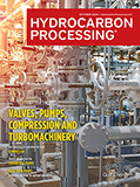E15 ethanol fuel can damage auto engines - study
Auto repair costs for consumers could rise due to adverse effects of fuel containing 15% ethanol blends (E15), according to new results from a two-year study on engine durability.
The study was conducted by FEV, a longtime consultant to the US Environmental Protection Agency, on behalf of the Coordinating Research Council (CRC).
The CRC study released Wednesday showed adverse results from E15 use in certain popular, high-volume models of cars, its authors said.
Problems included damaged valves and valve seats, which can lead to loss of compression and power, diminished vehicle performance, misfires, engine damage, as well as poor fuel economy and increased emissions.
“Clearly many vehicles on the road today are at risk of harm from E15. The unknowns concern us greatly, since only a fraction of vehicles have been tested to determine their tolerance to E15,” said Mitch Bainwol, CEO of the Auto Alliance trade group.
“Automakers did not build these vehicles to handle the more corrosive E15 fuel. That’s why we urged EPA to wait for the results of further testing.”
The potential costs to consumers are significant, the study says. The most likely repair would be cylinder head replacement, which costs from $2000-4000 for single cylinder head engines and twice as much for V-type engines.
“Our goal is to ensure that new alternative fuels are not placed into retail until it has been proven they are safe and do not cause harm to vehicles, consumers, or the environment,” said Mike Stanton, CEO of the Global Automakers trade group. “The EPA should have waited until all the studies on the potential impacts of E15 on the current fleet were completed.”
“Automakers believe that renewable fuels are an important component of our national energy security, but it is not in the longer term interest of the government, vehicle manufacturers, fuel distributors or the ethanol industry itself, to find out after the fact that equipment or performance problems are occurring from rushing a new fuel into the national marketplace,” added Bainwol.
 Growth Energy, an ethanol industry trade group, petitioned the EPA in March 2009 to raise the limit on ethanol in gasoline from 10 to 15%.
Growth Energy, an ethanol industry trade group, petitioned the EPA in March 2009 to raise the limit on ethanol in gasoline from 10 to 15%.
In June 2008, EPA outlined testing needed for the agency to approve a waiver, and EPA requirements were consistent with test plans developed by the auto and oil industries.
The CRC, composed of engineers from the auto and oil industries, was working with EPA and US Department of Energy (DOE) on a multi-year suite of tests on the effects of higher blends of ethanol, according to the trade groups.
This testing included more than $14.5 million of research sponsored by the auto and oil industries, and $40 million of testing sponsored by the federal government.
Before those tests were completed - in October 2010 and January 2011 – the EPA granted “partial” waivers to allow the introduction of E15 into the marketplace for use in model year 2001 and later vehicles.
EPA’s decision was based largely on a DOE study of the effects of E15 on durability of catalytic converters, the primary pollution control system in a vehicle
EPA did not undertake or wait to consider the results of this engine durability test, or for other E15 related research still underway, the groups allege.
The CRC study took duplicates of eight different vehicle model engines spanning 2001-2009 model years. All 16 vehicles were tested over a 500-hour durability cycle corresponding to about 100,000 miles of vehicle usage, the authors said.
A range of engine operating parameters was monitored during the test, including cylinder compression, valve wear, valve leakage, emissions and emissions control system diagnostics.
Two of the engines tested on E15 were said to have mechanical damage. Another engine showed increased tailpipe emissions beyond the allowable limit.
More details on the study can be found at the Global Automakers' website by clicking here.






Comments